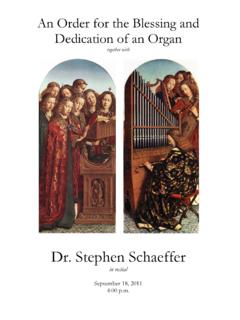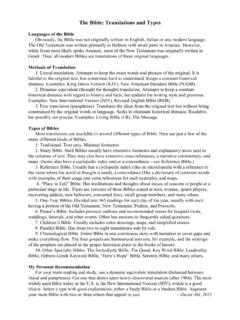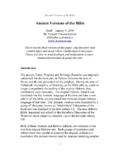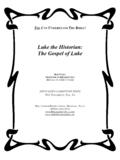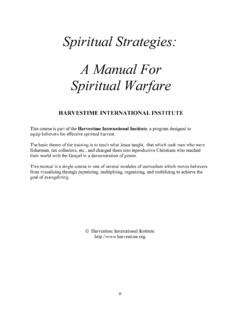Transcription of The Bible, New Revised Standard Version
1 THE bible with the Apocryphal/Deuterocanonical Books ZAINE RIDLING, Editor New Revised Standard Version Copyright 1989, Division of Christian Education of the National Council of the Churches of Christ in the United States of America. Used by permission. All rights reserved. bible Document Statistics: Pages: 3,060 Paragraphs: 39,904 Lines: 114,010 Words.
2 1,054,957 THE HEBREW bible with the Apocryphal/Deuterocanonical Books ZAINE RIDLING, Editor New Revised Standard Version Copyright 1989, Division of Christian Education of the National Council of the Churches of Christ in the United States of America. Used by permission. All rights reserved. HEBREW bible , TABLE OF CONTENTS 1 1 TABLE OF CONTENTS to the Hebrew bible HTForewordTH .. 3 HTTo the ReaderTH .. 7 HTAbbreviationsTH .. 15 HTIntroduction to the PentateuchTH .. 19 HTGenesisTH .. 28 HTExodusTH.
3 124 HTLeviticusTH .. 207 HTNumbersTH .. 266 HTDeuteronomyTH .. 348 HTIntroduction to the Historical BooksTH .. 426 HTJoshuaTH .. 435 HTJudgesTH .. 486 HTRuthTH .. 536HT1 SamuelTH .. 544HT2 SamuelTH .. 605HT1 KingsTH .. 657HT2 KingsTH .. 717HT1 ChroniclesTH .. 773HT2 ChroniclesTH .. 828 HTEzraTH .. 892 HTNehemiahTH .. 914 HTEstherTH .. 941 HEBREW bible , TABLE OF CONTENTS 2 2 HTIntroduction to the Poetical and Wisdom BooksTH .. 958 HTJobTH .. 967 HTPsalmsTH .. 1038 HTProverbsTH .. 1231 HTEcclesiastesTH .. 1290 HTSong of SolomonTH .. 1308 HTIntroduction to the Prophetic BooksTH.
4 1324 HTIsaiahTH .. 1332 HTJeremiahTH .. 1486 HTLamentationsTH .. 1625 HTEzekielTH .. 1646 HTDanielTH .. 1754 HTHoseaTH .. 1787 HTJoelTH .. 1814 HTAmosTH .. 1825 HTObadiahTH .. 1847 HTJonahTH .. 1852 HTMicahTH .. 1858 HTNahumTH .. 1874 HTHabakkukTH .. 1882 HTZephaniahTH .. 1890 HTHaggaiTH .. 1900 HTZechariahTH .. 1905 HTMalachiTH .. 1925 FOREWORD 3 3 FOREWORD The bible is the single most important influence in the imaginative tradition of Western literature. The bible redeems history with a visionary, poetic perspective, which complements science in the understanding of human nature.
5 It is encyclopedic in character, stretching from creation to the end of the world. It is violently partisan, abstract rather than objective or representational, with a multidimensional theme and variations rather than a linear exposition. The bible can be read as literally as any fundamentalist could desire, but the real literal meaning is an imaginative and poetic one, brought forth through myth and metaphor. The bible 's deep influence on Western literature makes it one of the first literary classics, but my own reading of the bible is expansive, open to resonances of contextual meaning.
6 The book is a double mirror, revealing a unified structure of narrative and recurrent imagery that ultimately reflects itself: the old is transformed and given new meaning; and the story ends back where it all began. Given this, there is a rich interaction between biblical and secular knowledge. Indeed, there is an imaginative energy flowing from the bible to creative minds for centuries. A student of English literature who does not know the bible does not understand a good deal of what is going on in what he reads: the most conscientious student would be continually misconstruing the implications, even the meaning.
7 I recommend reading the bible straight through to form a conceptual unity that corresponds to the imaginative unity of the text, but the bible is a very long and miscellaneous book, and many of those who have tried to read it straight though have bogged down very soon, generally around the middle of Leviticus. One reason for this is that the bible is more like a small library than a real book: it almost seems that it has come to be thought of as a book only because it is contained for convenience within two covers. In fact what the word " bible " itself primarily means is ta biblia, the little books.
8 FOREWORD 4 4 Those who do succeed in reading the bible from beginning to end will discover that at least it has a beginning and an end, and some traces of a total structure. It begins where time begins, with the creation of the world; it ends where time ends, with the Apocalypse, and it surveys human history in between, or the aspect of history it is interested in, under the symbolic names of Adam and Israel. There is also a body of concrete images: city, mountain, river, garden, tree, oil, fountain, bread, wine, bride, sheep, and many others, which recur so often that they clearly indicate some kind of unifying principle.
9 The bible 's disregard for unity is quite as impressive as its exhibition of it. The Quran is the earliest and by far the finest work of Classical Arabic prose. For Muslims it is the infallible Word of God, a transcript of a tablet preserved in heaven, revealed to the Prophet Muhammad by the Angel Gabriel. The Quran in itself is a literary masterpiece, but is also one of the most influential books in the history of prophetic literature. My effort here, with the aid of several Arabic scholars, is to provide a meaningful translation of the Quran for the modern English reader, written in Standard (American) English.
10 More often than not, when reading English translations of the Qur'an, one gets the sense of reading a foreign language translated literally, and thus sentences come across in English in strange contortions, leading the reader to scratch his head and reread the surah over and over in frustration. Until now, the Quran's contents has frustrated English readers simply because of poor translation efforts to date. The Standard English Version (SEV) translation directly addresses the problem of historical distance between past and present, between tradition and the needs of the contemporary generation, between revelation and interpretation.
